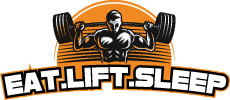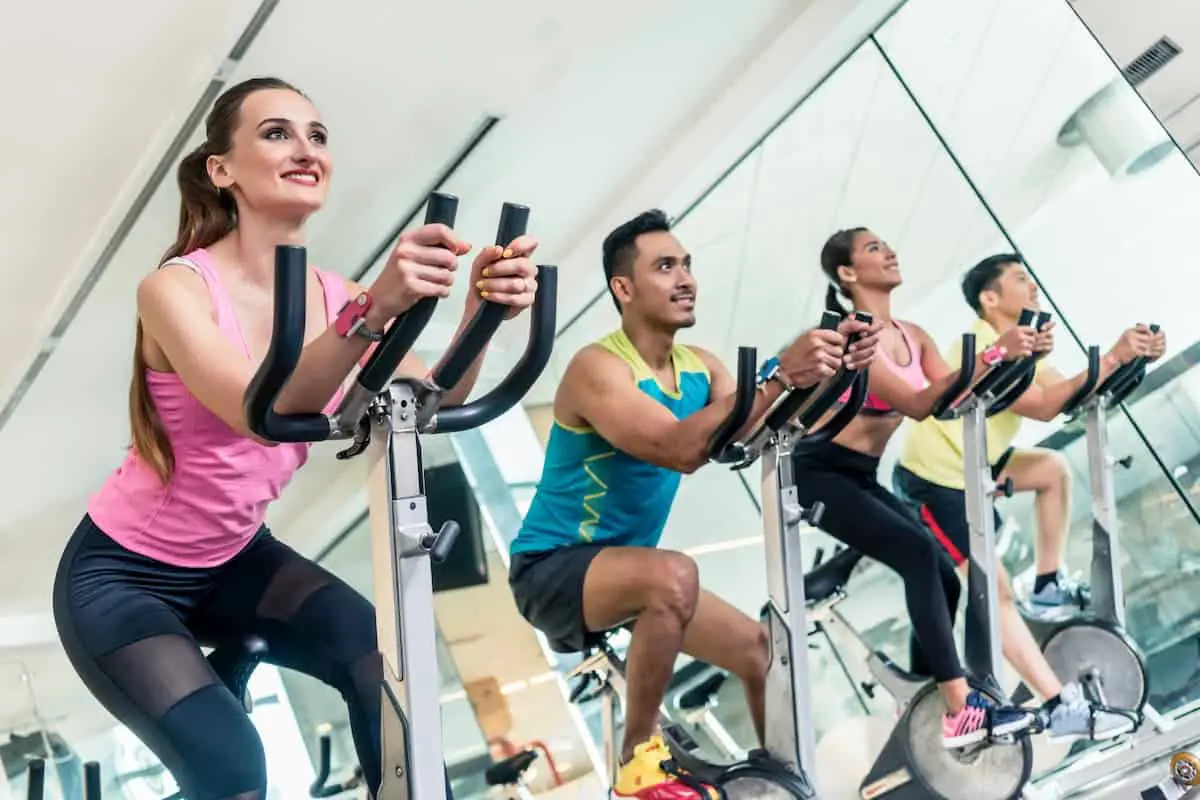Are you looking to improve your jump rope skills in CrossFit? Or maybe you’re just starting out and want to know what length of rope to use. Either way, it’s important to have a properly sized jump rope for your height and skill level.
Using the wrong length of rope can lead to inefficient movements and even injury. But don’t worry, determining the right length is easy with a few simple steps.
In this article, we’ll guide you through how to measure and adjust your jump rope for optimal performance in CrossFit workouts.
Understand the Importance of a Properly Sized Jump Rope
To fully comprehend the significance of having a jump rope that is proportionate to your stature, you must understand the importance of a properly sized one. Having a jump rope that fits you well will not only improve your performance but it can also prevent injuries.
If you use a jump rope that is too long or short, it can cause unnecessary strain on your joints and muscles which can lead to discomfort or even injury. One of the benefits of using a proper-sized jump rope is better control. A correctly sized rope allows for more efficient movement, giving you greater control over each rotation.
This means that you can perform double-unders and other advanced tricks with greater ease and accuracy. With better control comes improved speed and agility, making it easier to complete CrossFit workouts in less time. Another benefit of using the right-sized jump rope is improved endurance.
When your body isn’t constantly adjusting to an ill-fitting rope, you’ll be able to maintain proper form for longer periods of time without tiring out as quickly. Improved endurance means being able to complete more reps during circuits or AMRAPs (as many rounds as possible) which leads to greater overall fitness gains without risking injury.
By understanding the importance and benefits of having a properly sized jump rope, you can make sure that your workouts are effective and safe while achieving optimal results from every workout session.
Remember that finding the right size takes experimentation – start with recommendations from manufacturers then adjust according to personal preferences until finding what works best for you!
Determine Your Ideal Rope Length
To determine your ideal rope length for CrossFit, start with your height as a starting point. A general rule of thumb is to add an extra foot to your height.
However, consider adjusting it based on your skill level and jumping style. For example, if you’re a beginner or prefer slower jumps, a longer rope may be more suitable for you.
Use Your Height as a Starting Point
Start with your height to find the perfect fit for your jump rope sizing and make sure you’re set up for a successful workout! Using your height as a starting point is an easy way to determine what length of rope will work best for you.
Here are some factors to consider when determining the ideal length:
- Stand with both feet in the center of the rope and pull the handles up towards your armpits. The top of the handles should reach just below your armpits.
- If you’re new to jumping rope or have limited experience, it’s recommended to start with a longer rope that allows more room for error and adjustment.
- If you’re more experienced, a shorter rope may be preferable as it can increase speed and efficiency during workouts.
By using these simple steps, you’ll be able to quickly find the right length of jump rope for your body size and skill level.
Remember that having a properly sized jump rope is essential in order to maximize results while minimizing the risk of injury.
Consider Your Skill Level
If you’re a seasoned pro at skipping, opting for a shorter length may help you to step up your game.
As you progress in jump rope skills, your technique and form improve, allowing you to handle faster speeds and more complex moves.
A shorter rope can make these movements easier as it requires less effort to turn and control the rope. However, this requires a high level of skill and coordination.
Before choosing a shorter length, assess your current skill level using the table below:
| Skill Level | Height | Rope Length |
|---|---|---|
| Beginner | Below 5’4″ | 8-9 ft |
| Intermediate | 5’4″-5’10” | 9-10 ft |
| Advanced | Above 5’10” | 10-11 ft |
As a general rule of thumb, if you’re unable to complete basic jump rope skills consistently or struggle with coordination, stick with a longer rope. This will give you more room for error while learning proper form and techniques. Once you’ve mastered these basics, gradually decrease the length of your rope to challenge yourself and improve your skills. Remember that finding the right jump rope is not just about height but also about skill level assessment – take time to evaluate where you are in terms of proficiency before making any changes.
Take Your Jumping Style into Account
Want to take your jump rope game to the next level? Consider how your personal style of jumping can impact the length of rope you choose.
Jumping styles vary from person to person, and each style has a unique impact on performance. For instance, some people prefer to jump with their feet close together, while others like a wider stance. Some jumpers hop lightly off the ground, while others use more forceful jumps. These differences in style affect how long your jump rope should be.
If you have a narrow stance and light-footed jumping style, you can get away with using a shorter rope. This is because you don’t need as much clearance between yourself and the rope as someone who jumps with a wider stance or puts more force into each jump.
On the other hand, if you have a wide stance or tend to hop forcefully, you’ll need a longer rope that provides enough clearance for your feet and allows you to maintain proper form throughout your workout.
By taking these factors into account when selecting your jump rope length, you’ll be able to optimize your performance and get the most out of every workout session.
Measure and Adjust Your Rope
To measure your current rope, start by standing on the center of the rope with both feet and pulling the handles up towards your armpits. The ideal length should have the handles reach your armpits or slightly below them.
If it’s too long, adjust it by tying knots at each end until you reach the desired length.
Measure Your Current Rope
You’ll need to measure the rope you’re currently using before you can determine the proper length for your jump rope. This is important because if you’re already comfortable with the length of your current rope, then that can serve as a baseline for determining the correct size.
To measure your current rope, step onto the center of it with one foot and pull both ends up towards your armpits. The handles should reach just below your shoulder blades.
Common mistakes when measuring your current rope include not standing on the center and pulling too tightly or loosely. If you don’t stand on the center, you may end up with an inaccurate measurement. Pulling too tightly will result in a shorter length than what is actually comfortable for you, while pulling too loosely will make the rope longer than necessary.
Proper sizing has many benefits such as reducing tripping and improving form during workouts, so it’s essential to take accurate measurements beforehand.
Adjust the Length as Needed
Adjusting the length of your current skipping rope is crucial for optimal performance and avoiding tripping during workouts. Luckily, it’s a simple process that you can easily do at home. Here are some easy steps to follow:
- First, stand on the middle of your custom rope with both feet.
- Next, pull the handles up towards your armpits with both hands.
If the handles reach your armpits, then the length is just right for you. However, if they fall short or go beyond your armpits, adjust accordingly until you find the perfect length.
Once you’ve adjusted the length of your jump rope according to these steps, test it out by doing some basic jump rope tricks like double unders or single unders. This way, you’ll know whether or not it’s comfortable and manageable for you.
Remember that a too-long or too-short rope can affect not just your performance but also increase the risk of injury during workouts. So take those few minutes to adjust things and get ready to enjoy better CrossFit sessions!
Test Your New Rope
To test your new rope, start by experimenting with different lengths. A rope that’s too short or too long can hinder your performance and cause discomfort. Pay attention to how comfortable the rope feels as well as how it impacts your jumping ability. Finding the right length will help you get the most out of your crossfit workout.
Experiment with Different Lengths
Try out different lengths and find the perfect fit to unleash your inner athlete and crush those double-unders. Jump rope benefits are many, but it’s crucial to get the proper technique down before you start jumping for extended periods.
Once you’ve got that down, it’s time to experiment with different lengths.
Here are some tips on how to customize your jump rope length:
- Start with a baseline measurement of your height plus one foot.
- Adjust the length based on your skill level; beginners should start with longer ropes while more advanced athletes can use shorter ones.
- Consider the type of workout you’ll be doing; for speed work, a shorter rope is better while longer ropes work well for endurance training.
Variations in jump rope length allow you to tailor your workouts specifically to your needs. Don’t be afraid to try different lengths until you find the one that suits you best.
With practice and experimentation, you’ll soon find yourself jumping higher, faster, and longer than ever before!
Pay Attention to Comfort and Performance
Now that you’ve experimented with different lengths of jump ropes, it’s time to pay attention to your comfort and performance.
Comfort vs performance is a common debate when choosing the right fit for your jump rope. You want to make sure that your rope is comfortable enough for long workouts but also provides the necessary speed and efficiency for CrossFit movements.
When it comes to comfort, make sure that your rope isn’t too heavy or too light as this can cause unnecessary strain on your wrists and arms. The handles should also have a comfortable grip so you can maintain a good hold throughout your workout.
As for performance, choose a length that allows you to perform double unders efficiently without tripping on the rope or having to slow down significantly. Take note of how fast or slow you need to move in order to do double unders smoothly and adjust accordingly until you find the perfect balance between comfort and performance.
Consider the Type of Rope
When it comes to jump ropes, you have a few options to consider.
First, decide if you want a weighted or speed rope. A weighted rope will provide more resistance and is great for building strength, while a speed rope is lighter and faster for quick movements.
Additionally, consider the material and durability of the rope to ensure it can withstand your workouts.
Weighted vs. Speed Ropes
Weighted ropes and speed ropes are two popular options for jump roping in CrossFit. Both offer unique benefits, so it’s important to consider which one is best for your fitness level and goals.
Weighted ropes provide a greater challenge as you have to exert more effort with each rotation, helping to increase strength and endurance. These types of ropes are also great for building muscle mass in the upper body.
On the other hand, speed ropes are designed to be lightweight and fast, making them ideal for improving agility and coordination. They can help you perform double-unders, a common movement in CrossFit that involves jumping high enough to pass the rope under your feet twice before landing back on the ground.
If you’re looking to improve cardiovascular endurance or want to focus on performing more technical movements like double-unders, then a speed rope may be the better option for you. Ultimately, it comes down to personal preference and what aligns with your fitness goals.
Material and Durability
If you’re looking for a jump rope that’ll stand the test of time, it’s important to consider the material and durability of your chosen option. The material is crucial because it determines how long the rope will last, while durability ensures it can withstand wear and tear.
When it comes to materials, there are different options available like leather, nylon, PVC or steel cable. Durability is often associated with weight and grip. A heavier rope may be more durable but may also be challenging to use for extended periods. On the other hand, a lighter option may not last as long but may provide better control during workouts.
In terms of grip, some ropes have handles made from materials such as foam or rubber to ensure a comfortable and secure hold during intense sessions. Ultimately, choosing a jump rope with good material and durability can make all the difference in your CrossFit experience by ensuring optimal performance without having to worry about replacement costs anytime soon.
Maintenance and Care
Take good care of your rope so it stays in top condition and helps you crush those workouts! Proper jump rope storage is essential to prevent tangling and damage.
When not in use, coil your rope neatly and secure it with a clip or tie to keep it organized. Avoid throwing it on the ground or stuffing it into a bag where it can get tangled with other items.
Common jump rope maintenance issues include frayed ends, kinks, and twists. To avoid these problems, always use your jump rope on a smooth surface like a gym floor or mat. If you notice any fraying, trim the damaged area with scissors and seal the end with glue or tape to prevent further unraveling.
Kinks and twists can be straightened out by uncoiling the rope completely and gently stretching it back into shape.
Regular cleaning is also important to maintain your jump rope’s longevity. Wipe down your rope after each use with a damp cloth to remove sweat and dirt buildup. For deeper cleaning, soak the handles in warm soapy water for several minutes before rinsing thoroughly.
With proper maintenance and care, your jump rope will remain an effective tool for all of your CrossFit workouts!
Final Tips and Tricks
When it comes to jump rope, practice and patience are key. Don’t get discouraged if you can’t nail down a new trick or technique right away. Keep at it consistently and you’ll see progress over time.
It’s also helpful to seek advice from experienced jumpers or coaches. They may have tips and tricks that can help improve your form or suggest different types of workouts to try.
Finally, remember that everyone has their own unique style when it comes to jumping rope. Don’t compare yourself too harshly to others and focus on improving at your own pace.
Practice and Patience
Practice and patience are key to mastering the art of jumping rope for CrossFit. You may find yourself struggling in the beginning, but with consistent practice, you’ll surely improve your skills.
One way to practice is through jump rope drills that focus on specific techniques such as double unders or alternating foot jumps. By breaking down each movement and practicing them individually, you can eventually combine them into a seamless routine.
Aside from physical practice, mental focus during jump rope practice is also crucial. It’s easy to get frustrated when you can’t seem to get it right, but staying calm and composed will help you progress faster. Focus on your breathing, keep your eyes forward, and stay present in the moment.
With time and dedication, you’ll be able to master the jump rope technique for CrossFit workouts. Remember: Rome wasn’t built in a day!
Seek Advice from Experienced Jumpers and Coaches
If you’re serious about improving your jump rope skills, don’t hesitate to seek advice and guidance from experienced jumpers and coaches in the CrossFit community. They can give you valuable tips on proper form, technique, and how to avoid common mistakes that could hinder your progress.
Here are some reasons why seeking advice is crucial:
- Experienced jumpers and coaches can provide feedback. Getting feedback from someone who’s been jumping rope for a long time can help you identify areas where you need improvement.
- They can help with goal setting. Setting achievable goals is an important part of any fitness program. An experienced coach or jumper can help you set realistic goals based on your current skill level.
- They know how to prevent injuries. Jumping rope can be hard on the body if not done correctly. Seeking advice from someone who knows what they’re doing can help prevent injuries.
- They have access to equipment. Coaches and experienced jumpers often have access to different types of ropes that you may not have tried before.
In summary, don’t be afraid to ask for help when it comes to improving your jump rope skills. The CrossFit community is full of people who’re passionate about fitness and willing to share their knowledge with others.
Conclusion
So there you have it, now you know how long your jump rope should be for CrossFit.
Remember, a properly sized jump rope is crucial in maximizing your performance and avoiding injury. Take the time to determine your ideal rope length, measure and adjust accordingly, test it out, and consider the type of rope that works best for you.
Also, don’t forget about maintenance and care to ensure your jump rope lasts as long as possible.
Keep these tips in mind and keep jumping! With a well-fitted jump rope, you’ll be able to breeze through those double-unders and other CrossFit exercises with ease.






Leave a Reply